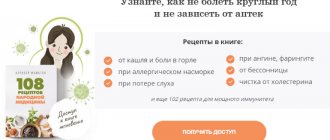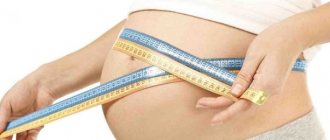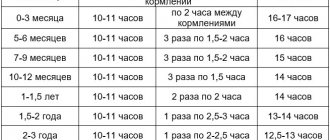Causes of choking while eating
Bulbar syndrome
A pronounced symptom occurs with bilateral damage to the nuclei of the caudal group of cranial nerves, which are responsible for the act of swallowing. Patients choke while drinking and self-feeding is impossible. There is no swallowing reflex, so saliva flows from the corners of the mouth. Choking is also caused by atrophy of the tongue muscles, which makes patients unable to chew food normally. The main diseases accompanied by bulbar syndrome:
- Stroke
. - Inflammatory and infectious causes
: Lyme disease, tick-borne encephalitis, Guillain-Barré syndrome. - Genetic pathology
: Kennedy disease, porphyria. - Damage to nerve cells
: syringobulbia and syringomyelia.
Myasthenia gravis
Choking with myasthenia gravis is associated with weakness of the muscles of the larynx, which contributes to the free flow of food masses into the trachea and bronchi. The disorder is pathognomonic in the bulbar form of the disease - patients choke while eating and drinking liquids. Characterized by variability of manifestations during the day, aggravation of symptoms after physical or mental fatigue. Similar signs are detected in half of those suffering from a generalized form of myasthenia gravis.
Amyotrophic lateral sclerosis
Swallowing disorders are observed in the later stages of the disease, after the development of muscle weakness in the limbs. At first, choking on solid food is observed; as amyotrophic lateral sclerosis progresses, patients constantly cough and gag while eating. The symptom is combined with speech impairment; saliva usually accumulates in the mouth, which patients cannot swallow.
Mental illness
In this case, choking has no organic cause. Symptoms are caused by dysfunction of the cerebral cortex and inappropriate behavior in severe mental disorders. Patients choke on both drinks and solid food, and sometimes fluid flows through the nose. At the same time, a painful paroxysmal cough begins, soreness and discomfort occur in the throat.
Chronic obstructive pulmonary disease (COPD)
Normally, a person swallows food while exhaling, when the airways are closed by the epiglottis and soft palate. In COPD, there is indiscriminate contraction of the muscles of the pharynx and larynx, resulting in a reflex inhalation when swallowing food. An attack of severe coughing begins, which is associated with irritation of the larynx with pieces of food.
Rare causes
- Developmental anomalies
: hypoplasia of the larynx, cleft palate. - Gastrointestinal pathologies
: diaphragmatic hernia, reflux esophagitis. - Traumatic rupture of the vagus nerve
.
How can you tell if a child is choking?
To begin with, every parent needs to remember that if a child is able to cry and call for help, it means that his airways are not blocked and the body will cope with the problem on its own. There is no need to vigorously hit your baby on the back or shake his legs. The cough that appears in such cases is the best helper, and you simply control the situation and calm the baby.
It is necessary to show concern and provide urgent assistance to a child if the following signs appear:
- the child’s eyes are wide open, and there is complete panic in them;
- the child is not able to inhale air normally and cry, his voice becomes hoarse or disappears altogether;
- the baby opens his mouth wide, salivation increases;
- the skin first turns red and then begins to turn blue;
- older children wrap their hands around their throats;
- in particularly critical situations, the baby may lose consciousness.
All of the above indicates that a foreign object has blocked the child’s airways and is preventing the normal flow of air. In this case, we immediately call an ambulance (tel: 03, 112, 030), and we ourselves begin to provide first aid.
We help children under one year old
(watch the video at the end of the article)
Most often, babies under one year old choke while feeding: milk, large pieces of food, water. The most common reason for this is incorrect posture. How to help the baby?
- One way is to raise the child's arms up. Few people have heard of this method, and at first glance it seems too simple and ineffective. However, this position helps to expand the airways and improve the breathing process.
- If this does not help, you need to place the child on his tummy on your hand and with the edge of your palm make 5 pats between the child's shoulder blades.
- If a child chokes on a small object or pieces of food, you need to lift the baby by both legs (Fig. 3) or by pressing on the root of the tongue to induce vomiting, this is often enough and no additional manipulation is required.
If a child breathes normally, but coughs a lot, it means that pieces of food are stuck not in the respiratory tract, but in the larynx. Usually, due to coughing or vomiting, the foreign body comes out on its own.
The situation is much more serious when food or a foreign object gets stuck in the child’s respiratory tract. In this case, untimely or incorrectly provided assistance can lead to suffocation and even death. The main signs of such a jam are that the baby cannot scream and cry, waves his arms and sucks in his stomach. There are several ways to clear a child’s airways:
- If a child chokes on water or milk, he begins to cough heavily (chokes on a cough, breathes noisily), you need to turn his back to you, hug him with one hand, while simultaneously pressing on the stomach area, tilt the baby forward and pat him on the back.
- If a child chokes on milk, water or saliva, but the previous method did not help, you need to place him on his back so that his head is lower than his body. We place the middle and index fingers under the baby's chest bone. We make five pressures, making sure that after each of them the baby’s sternum straightens. You need to alternate between pressing and patting on the back from step 1. before the ambulance arrives (see Figure 2).
- If a hard foreign object gets stuck (an icicle candy or the eye of a favorite toy), we place the child face down on his arm. The head should be below the chest. With our free hand we clap the child between the shoulder blades (Fig. 2). The second option is to take the child by the legs and lower him upside down. We clap between the shoulder blades in the same way (Fig. 3).
(Figure 2) Place the baby face down in your arm so that the head is lower than the body.
Using the heel of your free hand, clap 5 times in a row between the child's shoulder blades. After each pop, check to see if the airway blockage has cleared. If the foreign body cannot be removed, turn the child onto his back. Place two fingers on the baby's sternum and make 5 presses, pressing the sternum to a depth of 1-2 cm and allowing the sternum to straighten after each press, without removing your fingers from it. If these measures do not help, call the ambulance again and make sure that the call was accepted. Until the ambulance arrives, continue to provide first aid, alternating between patting the back and squeezing the chest. If at any point the child loses consciousness, begin artificial respiration and chest compressions. (Figure 3) we take the child by the legs and lower him upside down, clapping between the shoulder blades. All pressing and patting performed should be gentle but sharp. When performing such movements with significant force in babies under one year of age, there is a risk of rupture of internal organs.
Some sources give fundamentally incorrect advice - examine the child’s larynx with your finger and try to remove the foreign body. Perhaps this method will help if something soft, such as cotton wool, is stuck. But in most cases, you run the risk of simply pushing the stuck object even deeper, and then you definitely cannot do without surgical intervention.
[sc:ads]
First aid for a child over one year old
(watch the video at the end of the article)
The most important thing here is the absence of panic. Children older than one year already understand more, and therefore excessive concern and nervousness will only aggravate the child’s mental state at this already difficult moment.
The basic principles of providing assistance here are the same as for children under one year old. If pieces of food or foreign objects get stuck in the larynx, you need to induce vomiting or lift the baby by both legs. Although sometimes the child is able to clear his throat on his own.
If the manipulations listed in the previous section do not help, place the baby face up on a flat surface and turn his head slightly to the side. Now you need to perform several presses on the upper abdomen and lower part of the sternum in an upward direction. This method helps to push the stuck object out of the respiratory tract.
Another way: Give 5 slaps on the back
Sit or stand behind your baby and place your hand diagonally across your chest. Tilt your baby forward a little so that he is leaning on your hand. With the palm of your free hand, give five firm and separate slaps on the child's back, directly between the shoulder blades.
When a candy, piece of food or any other foreign object gets stuck, the Helmich method is effective for children over one year old. It consists of the following:
- we stand behind the child (if he is small, we kneel);
- We wrap our arms around the baby’s waist;
- clench one hand into a fist and place it between the ribs and the baby’s navel with the thumb inward;
- We clasp the fist with the second palm;
- We spread our elbows to the sides and press on the child’s stomach in the direction from bottom to top.
Such movements must be performed until a piece of food jumps out of the child’s respiratory tract. Remember that the method cannot be used on children under one year old.
Bend the child forward and use the heel of your hand to make five strong claps in a row between the shoulder blades. Between pops, check to see if the blockage has cleared. If the airway cannot be cleared, proceed to the next step. Place one hand on your back and the other in the center of your chest. With the hand that lies on the chest, make 5 strong pressures, much like a heart massage, but slower and sharper. If these measures do not help, call an ambulance, and until it arrives, alternate 5 claps on the back and 5 chest compressions.
What to do if the child stops breathing?
The child may stop breathing due to a spasm in the throat, which in most cases occurs due to the baby’s stressful state.
You can restore breathing as follows:
- place the child on the floor on his side;
- tilt his head back a little;
- lift your chin.
If such manipulations do not help, you should immediately begin performing artificial respiration. It is done as follows:
- Place the baby on his back on a flat surface;
- we tilt the baby’s head back and open his mouth;
- check that there are no foreign bodies in the child’s mouth;
- take a deep breath;
- cover the child’s nose and mouth with our mouth and exhale the collected air;
- repeat 2 times. If the child's chest rises with a sigh, then you are performing artificial respiration correctly. If your baby's chest does not rise, this means his windpipe is still blocked and you should return to first aid procedures to remove the foreign body;
- Next, we place the palm of one hand on the child’s chest between the nipples, cover it with the other hand and make sharp pressing movements. Each press should be strong and fast and should press down the baby's chest about 5 centimeters. Allow your chest to return to its starting position between each compression;
- alternate 15 pressures with air inhalation.
Video - First aid: how to perform artificial respiration on an adult and an infant
Even if everything went well, you should not ignore the help of the ambulance that arrived in time. It is possible that the airway has been injured by a foreign object and you will need the help of a specialist.
Diagnostics
A neurologist examines patients with complaints of choking on food. Many causes are already established on the basis of carefully collected clinical data, so the doctor conducts a detailed examination, checking tendon reflexes and assessing muscle tone. Next, specific diagnostic methods are prescribed, the most informative of which are:
- Proserine test
. The study is necessary to verify the diagnosis of myasthenia gravis. In this disease, after subcutaneous administration of 3 ml of proserine, muscle function is restored, the person can make swallowing movements. - Electroneuromyography
. The study helps confirm neuromuscular causes of choking. Characterized by a reduced response of muscle fibers to stimulation by impulses, rapid muscle fatigue is observed after repeated exposure. - MRI of the brain
. The method is necessary for visualizing brain tissue and identifying focal lesions. For amyotrophic lateral sclerosis, the appearance of a hyperintense MR signal in the area of the cerebral peduncles and internal capsule is typical. In case of stroke, the area of ischemia is determined. - Additional methods
. To exclude pathology of the digestive system, a survey radiography of the abdominal cavity and photographs using a contrast agent are performed. To exclude COPD, spirography and bronchoscopy are performed. Sometimes a consultation with a psychiatrist is prescribed.
Treatment
Help before diagnosis
If the disorder occurs occasionally and is caused by the habit of talking while eating, specific therapy is not required. The appearance of regular choking while eating, as a result of which a person cannot eat normally, indicates severe damage to the brain or other systems, which requires qualified medical care.
Conservative therapy
Medical tactics consist of eliminating or slowing down the progression of the underlying disease that caused choking. For myasthenia gravis, physiotherapeutic methods and massage are indicated to improve muscle function. In severe situations, when independent food intake is impossible, parenteral nutrition is provided. For etiotropic and pathogenetic treatment, drugs such as:
- Anticholinesterase drugs
. Medicines from the proserin group improve neuromuscular transmission processes and eliminate the causes of choking. To achieve a lasting clinical effect, they are taken for several years. - Glucocorticoids
. Hormones are used in severe forms of encephalitis to prevent brain swelling. They are also recommended for rapid progression of myasthenia gravis and amyotrophic lateral sclerosis. - Antipsychotic drugs
. Prescribed for serious mental disorders, which are accompanied by swallowing disorders and food getting into the larynx. Antipsychotics and tranquilizers are effective for quick relief of symptoms.
Prevention of troubles
In order to avoid having to urgently remove all kinds of objects from the child’s respiratory tract, you need to take some precautions:
- choose soft toys carefully - the pile should not be too long and difficult to pull out;
- put off toys with small parts until a more conscious age;
- from a very early age, do not allow your baby to put everything in his mouth;
- teach your baby to eat carefully and not to indulge while eating;
- It is advisable to exclude any toys at the table; do not distract the child in this way so that he eats well;
- Grind the food offered to your child well, and thoroughly clean fish and fruits of bones and pits.
And one more important detail - there is no need to force feed the baby. The child will absolutely twist, struggle and resist, and this is another possibility of choking.
We also read:
- A child has a foreign body in the ear or nose - first aid rules
- What to do if a child swallows a foreign object
- What to do if a child has been bitten by mosquitoes, midges, bees, wasps - first aid for insect bites
- First aid for a child in emergency situations
We only told you about first aid for your child in an emergency. No matter what happens, calling an ambulance is simply a necessary measure. Even if the problem was resolved independently, it is impossible to answer unequivocally whether the child damaged the airways or not. Consulting a specialist will allow you to once again make sure that everything is in order.
Be sure to watch the video!










